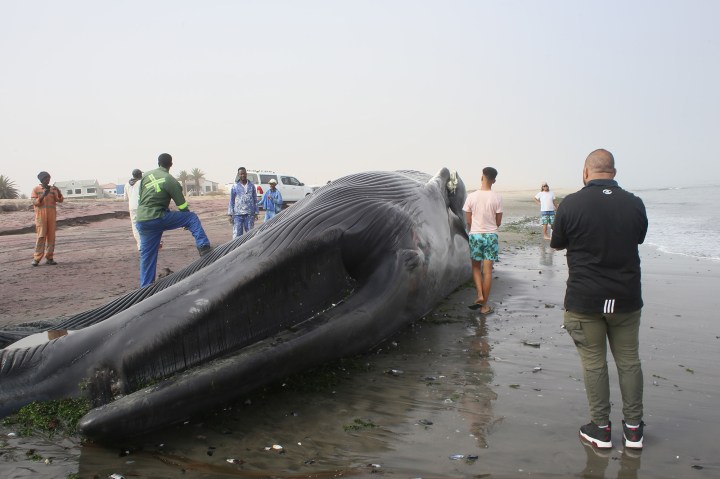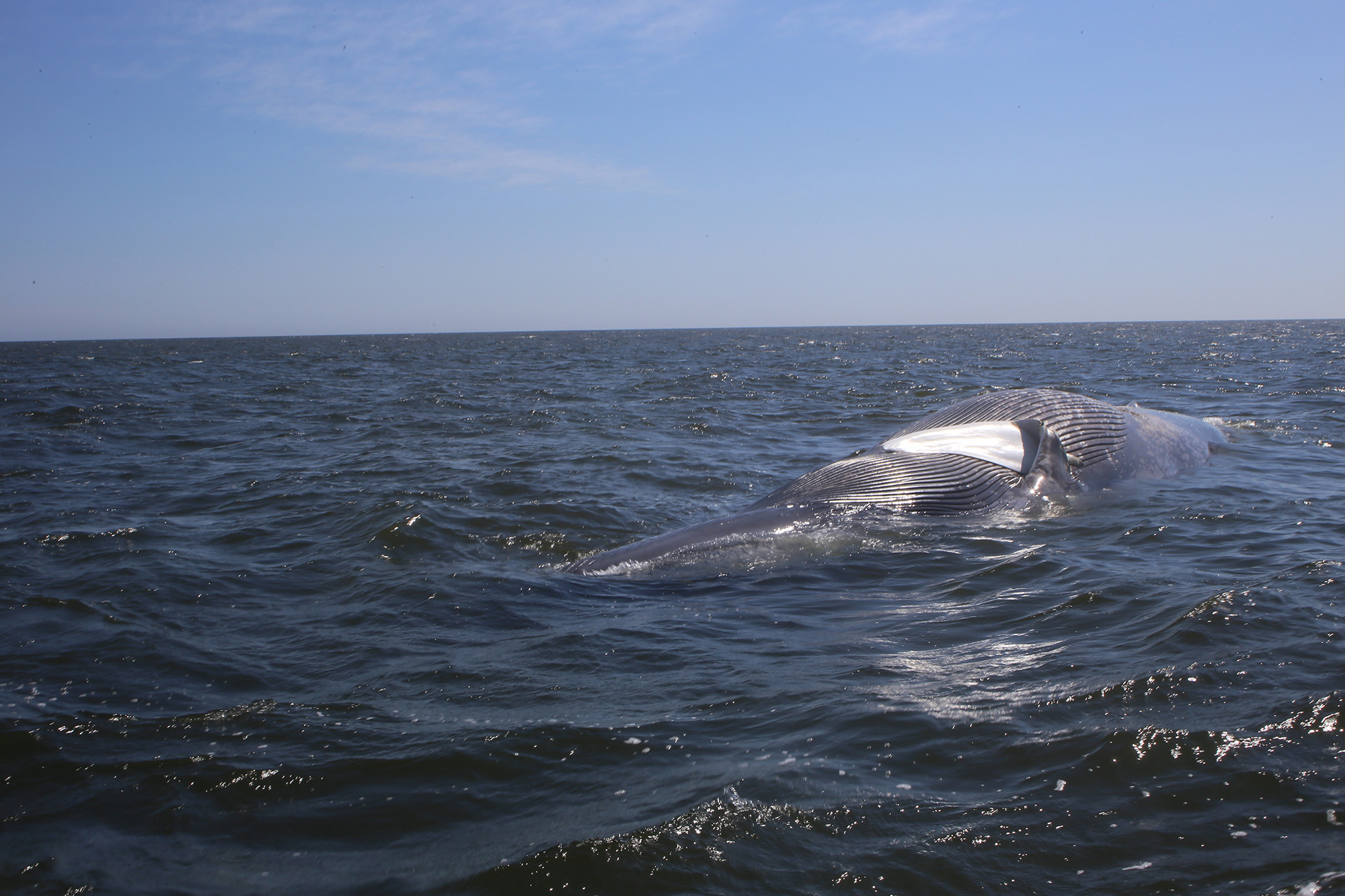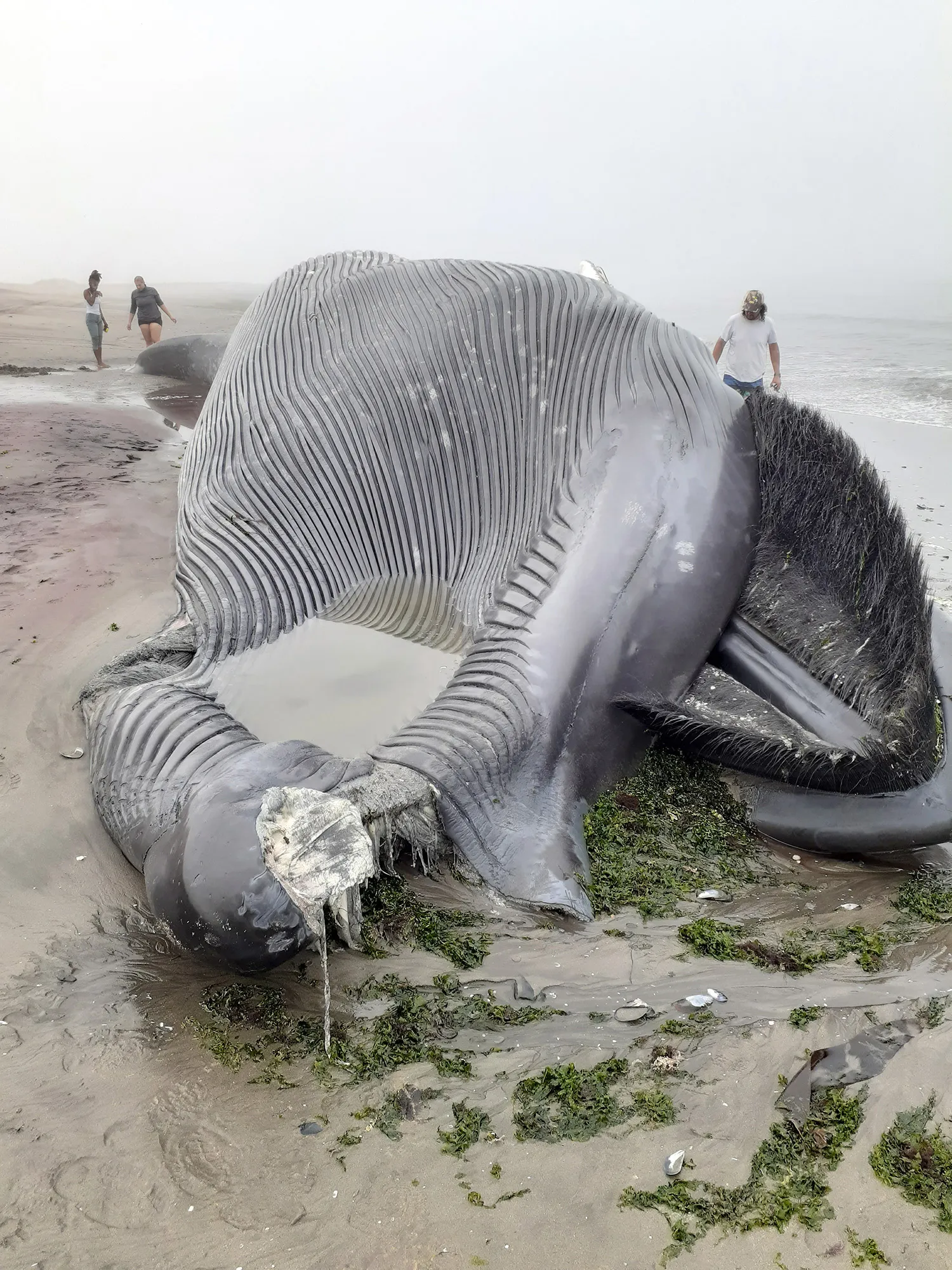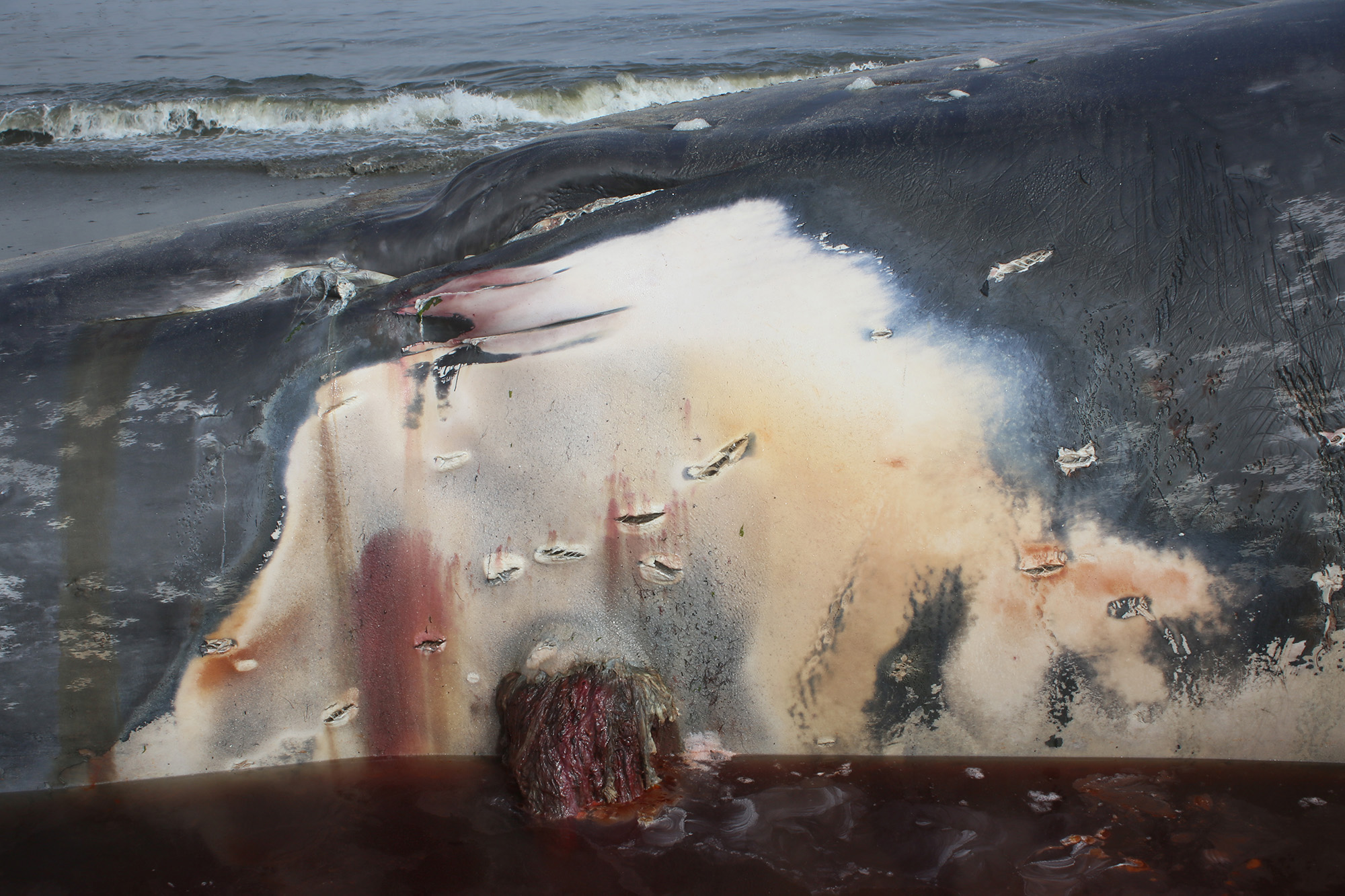OUR BURNING PLANET
Critically endangered blue whale washes up on Namibian coast

The first washed up blue whale in Africa since the 1986 ban on whaling could be an indication of the population recovery of the endangered animal.
An 18.3m dead blue whale was seen floating mid-bay in Walvis Bay, in Namibia, on 26 April. The whale would a day later be washed up ashore, becoming the first washed up whale recorded in Africa since the ban of commercial whaling in 1986.
The washed up whale, overcome by a ship strike, is an indication of the population recovery of the endangered animal — with the population size only 1% of its pre-whaling population — recolonising the southern oceans.

The whale was drifting north with the ocean’s current on the day of the sighting. (Photo: Bridget James / Sea Search / Namibian Dolphin Project)
The blue whale’s remains were buried on 6 May after it washed up on Dolphin Beach on 27 April.
Blue whales are typically found far from shore in waters at least 500m deep and usually die out in the open ocean, said Dr Simon Elwen, the director for the Namibian Dolphin Project (NDP).
The whale was drifting north with the ocean’s current in the rough and windy conditions on the day of the sighting. A small research crew from the NDP was alerted and went out to sea to collect photographs and basic information — including gender determination and skin samples — about the animal.

The blue whale’s remains were buried on 6 May after it washed up on Dolphin Beach, Walvis Bay, on 27 April 2021. (Photo: Bridget James / Sea Search / Namibian Dolphin Project)
“My first encounter with this magnificent blue whale was at sea,” said Bridget James, PhD student at Stellenbosch University who was onsite at the time and did the measurements of the giant.
Walvis Bay is known for its whale and dolphin presence — as its name, which translates into English as “Whale Bay”, indicates — but sightings of blue whales mostly occur further out to sea.
“We were all very excited to find the animal and awed by the sheer size of it. During such encounters we try as best as possible to collect at least the basic data… just in case the animal gets blown out to sea again or sinks before making landfall,” she said.
At first, the whale was thought to be about 13m to 15m long, owing to its position with part of the head and tailstock underwater, James said.

The whale is believed to have died from a ship strike. (Photo: Bridget James / Sea Search / Namibian Dolphin Project)
“When we arrived at the animal on the beach the true enormity of it was apparent,” said James, who has in her career seen mostly juvenile humpback whales washed up on the beach.
“Encountering an animal 18-plus metres long was quite astounding,” she said. “The mottled markings on the skin, unlike the more uniform colouration of humpback whales, was quite beautiful.”
Whaling’s toil on population
Blue whales are found in all major oceans except the Arctic and are native to many coastlines, including Namibia, said Kate Wilson, spokesperson for the International Whaling Commission (IWC).
But much remains unknown about the blue whale’s migration routes, as well as their breeding and feeding grounds, said Wilson.
“In the early 20th-century era of industrial whaling, blue whales were highly prized (a single animal yielded a large amount of oil) and numbers fell steeply,” Wilson said.
According to James, the whales — likely targeted while on their migration between May and August — were among those caught by modern power-driven whaling ships departing from Walvis Bay in the years 1912 to 1914 and 1923 to 1930.
“The Antarctic blue whale population is estimated to have dropped from around 300,000 to just 400 animals,” Wilson continued. “Some populations are slowly recovering, but today they face other threats including ocean noise, pollution and increased traffic,” she added.
According to Elwen, sightings remain uncommon in the southern oceans, owing to the blue whale population accounting for a mere 10,000 individuals that are typically active away from Namibia’s coast.
About 100 years ago South Africa and Namibia were among the world’s blue whale hotspots, said Elwen.
In 2007, there were only two confirmed blue whale sightings off the coast of South Africa, Elwen said.
But scientists are finally seeing signs of population recovery with evidence of blue whales returning to southern oceans, even though sightings by locals of the famed largest animal to inhabit the earth (growing to a size of up to 30m long) remain below 10.
For the past decade and a half, sightings have tripled since 2007, said Elwen.
Acoustic monitoring used to indicate the whales’ presence has yielded the most success, as the pitch of the mammals’ calls are extremely low and barely within the frequency of human hearing. Yet, blue whale vocalisations can travel as far as 180km underwater, said Elwen.
Acoustic research conducted by marine biologist Dr Fannie Shabangu explored the presence of blue whales in Angola’s Benguela ecosystem in 2014 and 2015 by detecting their calls.
Shabangu suggests that the Benguela ecosystem serves as an overwintering ground and part of the blue whales’ migration route.
According to James, in addition to repopulation after the moratorium on whaling, the blue whales’ growing presence can be linked to their recolonising of South African and Namibian waters, as the population increases in size towards carrying capacity.
“We are interpreting the increased presence of whales off the tip of Namibia as a good sign,” Elwen said.
Ship strike
According to Elwen, incidents of ship strikes and whale entanglement in fishing nets are increasing as the animal population grows. This is compounded by heavier shipping traffic around southern Africa and the world at large.
There is mounting concern, especially around South Africa, about ship strikes involving right whales and humpback whales, although Elwin believes such incidents are not affecting population size at the moment.
“We have loads of ship strikes during certain months of the year… during the summer of months, when we have hundreds of whales off the west coast and you have ships going right past them,” he said.
Wilson, however, said that collisions between whales and vessels are one of the biggest threats to the blue giants, especially in areas where their habitats coincide with shipping lanes.
The IWC is also working with organisations on mitigation measures such as vessel speed restrictions and seasonal shipping lane diversions. Wilson said that the IWC is currently mapping “hotspots” and highlighting areas where particularly vulnerable whale populations live among or migrate through dense shipping activity. DM168


















 Become an Insider
Become an Insider
Comments - Please login in order to comment.